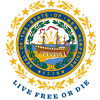Information for Property Owners
Information and resources regarding the Lead Paint Prevention and Control Act of 1993 which grants DPHS the authority to inspect rental dwelling units and licensed child care facilities for the presence of lead exposure hazards involving children
NH's New Law Aims to Prevent Unsafe Housing and Child Care Centers from Being Added to the Market
RSA 130-A:5-d requires property owners to have a Lead-Safe Certificate prior to occupancy in newly constructed rental properties and newly licensed child care facilities located in buildings constructed before 1978.
As of July 1, 2024, RSA 130-A:5-d requires the following buildings to have certifications of lead safety prior to being used as either a residential rental unit or as a child care facility.
I. Newly-constructed rental units within buildings erected prior to January 1, 1978. For the purposes of this section "newly-constructed rental units" means rental units being converted from a use other than residential rental housing.
II. Newly-licensed day care facilities within buildings erected prior to January 1, 1978.
Read the Sale and Rental of Property Factsheet and Frequently Asked Questions.
What Does This Mean for Residential Properties?
All pre-1978 properties being converted into rental housing will be required to have a Lead Safe Certificate issued by a licensed NH Risk Assessor prior to occupancy.
This law does not require those rental properties already in existence to have a Lead Safe Certificate however, it would require any pre-1978 building that had not previously been used for this purpose to obtain a Lead Safe Certificate prior to rental. This would include properties such as mill buildings or other large buildings being converted into rentals.
It would also require those properties that might have previously been single family, owner-occupied homes that are now being converted into multi-unit rentals or single-family homes that used to be owner-occupied that are now being put on the rental market to have a Lead Safe Certificate.
Program Information
Contact Information
What Does This Mean for Childcare Facilities?
RSA-A 130-A:5-d does not require currently licensed childcare facilities to obtain a Lead Safe Certificate but, will require any newly licensed childcare facilities opening in a building built prior to 1978 to have a Lead Safe Certificate on file issued by a licensed NH Risk Assessor.
RSA 130-A Lead Paint Prevention and Control
Formal efforts for the control of childhood lead poisoning in New Hampshire began with the adoption of RSA 130-A (Lead Paint Prevention and Control Act of 1993). This statute provides the DPHS the authority to inspect rental dwelling units and licensed child care facilities for the presence of lead exposure hazards when a child 72 months and younger has a venous blood lead level of 5 µg/dL or higher or there is reason to believe that a lead exposure hazard exists.
Homes and apartments built before 1978 may contain lead paint. If you rent homes or apartments built before 1978, you have an important responsibility to maintain your property as well as follow all applicable laws including the EPA/HUD disclosure rule, which requires the distribution of EPA's Protect Your Family Brochure, and the EPA Renovation, Repair, and Painting Rule to help reduce the likelihood of a child being exposed to lead. Maintaining your property and doing your part to prevent childhood lead poisoning helps to protect your investment.
In NH, when lead exposure hazards are identified in a rental property with a resident child 72 month and younger with a venous blood lead level of 5 µg/dL or higher, the DPHS issues an Administrative Order of Lead Hazard Reduction (Order) to the property owner.
In NH, lead exposure hazards are defined as:
- Deteriorated lead-based paint including paint that is peeling, chipping, chalking or cracking.
- Lead-based paint on surfaces, such as windows and doors, that are subject to friction or impact.
- Lead based paint located on chewable surfaces such as windowsills.
- Bare soil in children’s play areas that has equal to or greater than 400 parts per million (ppm) of lead or 1200 ppm average of lead for bare soil in the rest of the yard.
When a property is under Order, the property owner cannot re-rent the dwelling or dwelling unit if it becomes vacant. The Order remains with the property, recorded on the Registry of Deeds, until all the lead exposure hazards have been addressed. Unless the property owner decides to remove the property from the rental market or requests approval of another abatement alternative, NH law requires property owners to address the lead-exposure hazards in 90 days by:
- Hiring a NH Licensed Risk Assessor to test the property and identify all the lead exposure hazards;
- Having a scope of work and Occupant Protection Plan developed;
- Hiring a NH Licensed Lead Abatement Contractor to address all the lead exposure hazards using approved abatement methods. (Property owners must become licensed themselves if they would like to conduct lead abatement work on their property); and
- Hiring a NH Licensed Risk Assessor or Lead Inspector to perform a clearance inspection and verify that all the lead exposure hazards have been addressed.
Funding is available to assist property owners with the cost of abatement through various HUD grant and loan programs throughout the State. Below you will find links to the available HUD grant programs and forms for property owners who have been issued an Order.







